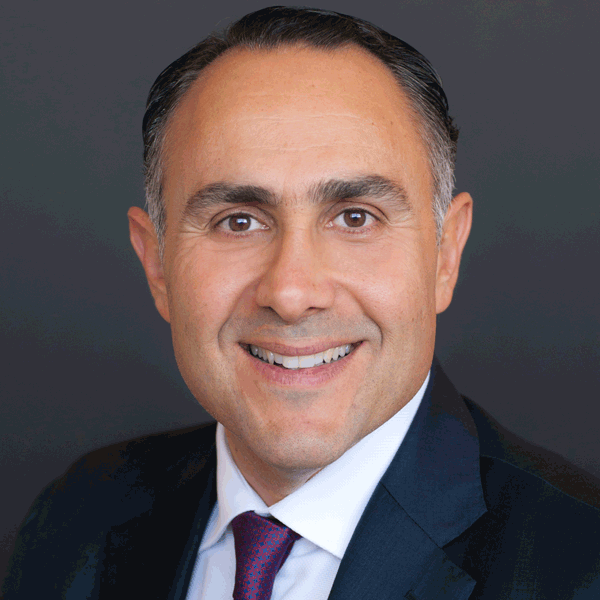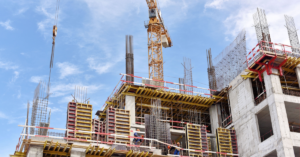Multifamily assets have been star performers for several years. Property values have risen solidly and investors continue to make capital readily available in their pursuit of attractive returns. Nationally, annual rent growth exceeded historical returns and averaged 4.4 percent from 2012 to 2018, according to Reis Inc. Freddie Mac expects the national vacancy rate to remain at a relatively low 5.1 percent in 2019.
The question for commercial mortgage brokers and their investor clients, however, is whether these conditions will last. The multifamily market’s ecosystem must maintain a healthy balance between the consumer demand for rentals and the supply of new apartments that builders can provide. Are the recent good times for the market too good to be true?
On the demand side, there is little to worry about. Despite a large number of new apartment buildings that are ready or nearly ready for occupancy, the demand for apartments shows few signs of slowing down.
The U.S. population is expected to grow, which will inevitably lead to household growth and a shortage of housing options. Harvard University’s Joint Center for Housing Studies, for example, projected that the U.S. will add 13.6 million households between 2015 and 2025, or an average of 1.2 million new households per year. The supply of new apartments is not predicted to keep up with the demand, according to a 2019 forecast from real estate services company Marcus & Millichap. This suggests that rents and investor returns should increase.
Changing lifestyles
Data on homeownership also suggests that renting has gained favor. The U.S. homeownership rate stood at 64.4 percent as of the third quarter of 2018, down 2.2 percentage points since 2010, according to Marcus & Millichap. The Los Angeles metro area, for example, had the lowest homeownership rate among major U.S. cities in third-quarter 2018 at 47.3 percent, falling 1.8 percentage points since 2010, the company reported.
The declining rate of homeownership over this period was likely a consequence of the financial crisis 10 years ago. Many homeowners who lost their homes in foreclosure remain skittish about buying a house. The thought of being solely responsible for a mortgage may be too daunting. And changes in the federal tax code that reduced incentives for owning a home also have turned some buyers away.
The lifestyle of younger Americans also has boosted demand for rental housing. Today’s up-and-coming consumers expect a life of mobility — changing cities, careers and housing options at will. Many consumers don’t understand the rationale of being tied down by a mortgage for up to 30 years, when renting is flexible and carries little or no long-term responsibility.
Moreover, there has been crippling rise in student-loan debt. Student debt is the second-highest form of consumer debt nationwide, trailing only mortgage debt, according to Forbes. This has made homeownership a distant mirage for an entire class of potential homeowners and it also has increased the need for multifamily housing. The Consumer Financial Protection Bureau reported that 44 million Americans had student debt as of 2017. The Federal Reserve estimated the national student-debt load at more than $1.5 trillion at the end of 2018. Many former students won’t consider homeownership in the foreseeable future, forcing them to rent.
Baby boomers also are opting to rent as they retire. Boomers form a large chunk of the U.S. population and many are choosing to downsize into smaller, more manageable rental units as they retire. The number of Americans over 65 is projected to increase dramatically over the next 40 years. By 2030, one in five residents will be of retirement age, the U.S. Census Bureau projects. This should cause an acceleration in the demand for multifamily housing.
Supply challenges
Although the future demand for apartments is virtually assured, the picture on the supply side is less clear. Several cities face a potential shortage of apartments. By some estimates, California alone will need at least 180,000 new housing units per year through 2025 to stabilize values and avoid future rent increases, the California Department of Housing and Community Development estimated.
Several factors have held back the construction of apartments. New construction projects usually require the approval of various governmental agencies for the type, size and location of a building. The risky approval process can become a burdensome slog of delays for the developer. Approval times vary wildly from city to city. In San Francisco and Los Angeles, among other major metros, it can take up to a year or more to obtain approval for developments. The need for a zoning change also can considerably lengthen the timeline for a development.
Developers may be slowed by opposition of neighboring residents, or environmental concerns. Opposition can lead to extreme delays of as much as two years, even for medium-sized projects. The delays themselves can affect the goals of a proposed project, and may lead to changes in local ordinances that might limit the size of units or present other new obstacles.
Another evolving obstacle is the rising cost of construction materials. According to Kiplinger, federal tariffs on imports of steel, lumber and electrical components have raised the cost of some construction line items, on a national basis, by more than 10 percent year over year as of 2018. The uncertainty surrounding the movement of interest rates and borrowing costs also is a potential risk to the supply pipeline.
The dire shortage of skilled journeymen is another significant problem. Some contractors are poaching labor from their competitors by paying more, which accelerates the enormous increase in labor costs. Results of a recent survey by the National Association of Home Builders (NAHB) indicated that the majority of its members (69 percent) were unable to complete projects on schedule because of a shortage of qualified workers. Huge numbers of skilled construction workers left the industry during the Great Recession, and construction companies are not attracting enough new workers to add to the labor force.
• • •
All of these factors make it less clear whether builders and developers will produce enough apartments to keep the market on an even keel. Restrictions for growth exist and these can’t be ignored. The very conditions that are boosting rents today may ultimately become a drag on the multifamily-housing sector. Despite the challenges for supply, however, commercial mortgage brokers and investors should remain confident that the underlying demand for these assets is — and will continue to be — healthy and strong into the foreseeable future.
Author
-

Paul Rahimian currently manages a debt fund that provides construction financing to ground up real estate development projects on a national basis. He founded Parkview Financial in early 2010 and has since originated hundreds of commercial and residential loans, always plying his trademark hands-on management style. Distinguished from its competitors by dedicated in-house finance and accounting professionals Parkview is widely recognized as a pioneer in the industry, among the first to offer complete integration of loan origination and servicing. Prior to becoming a lender, Paul was a third-generation real estate developer and general contractor. Between 1988 and 2009, he successfully completed over $350MM in commercial and residential projects. His vast expertise and knowledge in the construction and development industry has benefited both Parkview and its borrowers. Paul received his B.A. from UCLA in Business/Economics and his Juris Doctorate from the University of Southern California.
View all posts





